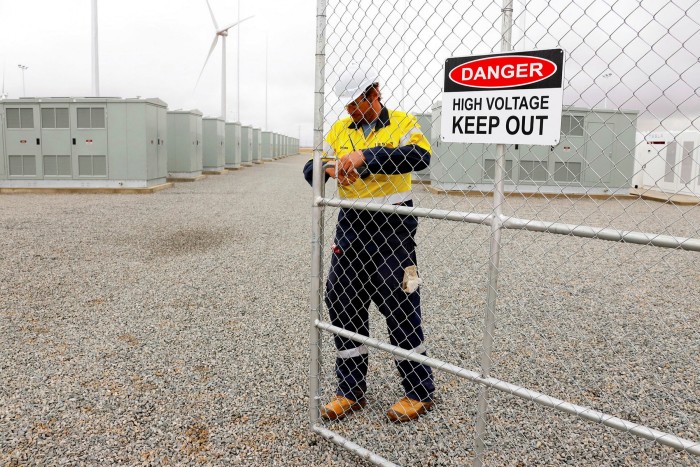Batteries Charge Up Australia’s Efforts To Shift Away From Coal
Operators of the Hornsdale Power Reserve say it has helped save consumers A$150m ($115m) in energy costs in its first two years © David Gray/Reuters
Energy storage projects will offer grid stability to boost solar and wind power rollout. In 2017, following several power cuts in the state of South Australia, Tesla chief executive Elon Musk made an audacious bet on Twitter: if he could not build a battery to solve the crisis in 100 days, he would provide one for free. Musk won his bet, and operators of the resulting 129 megawatt-hours Hornsdale Power Reserve battery say it has helped save consumers A$150m ($115m) in energy costs in its first two years of operation. The success of the lithium-ion battery has kickstarted other such projects aimed at helping Australia to integrate solar and wind energy into its electricity grid, by storing power for when it is needed. In February, French renewable energy company Neoen, which operates the Hornsdale project, said it had secured financing for an even bigger battery in Geelong, south-west of Melbourne, for 450 MWh of storage. The Hornsdale Power Reserve features the world’s largest lithium ion battery © David Gray/Reuters Melbourne-based renewable developer CEP Energy also says it will build four batteries in Australia, including a A$1.5bn unit at Kurri Kurri in the state of New South Wales. These developments offer a way of replacing supply from once-dominant coal power stations. “There is an opportunity to provide grid stability as a lot of coal-fired power was being turned off quickly, probably faster than anyone planned,” says Peter Wright, CEP chief executive. “This would lead to a significant shortfall.” Batteries will also be critical to meeting climate targets by mid-century, as they can ease the integration of renewable energy by smoothing out fluctuations in supply — when the sun does not shine or the wind does not blow. Recommended Batteries Tesla and French energy group to build new Australia mega battery Their deployment is already forecast to grow rapidly: storage is set to increase to 62 gigawatt-hours by 2030, from 3.7 GWh last year, according to Rho Motion, a consultancy. That equates to about 4 per cent of the battery market for electric vehicles by then, Rho Motion says. Lithium-ion batteries, the same as those used in electric cars, can provide short bursts of power in fractions of a second, allowing them to make up for sudden electricity shortfalls or to store excess energy. That can help in places well suited to solar power generation — as output is typically strongest around midday, when demand is weak, but falls as demand increases around sunset, as people return home from work. “As the penetration and volume of solar and wind increases, batteries are required to buffer a lot of that variability,” explains Mark Stedwell, an adviser to CEP Energy.
www.ft.com



